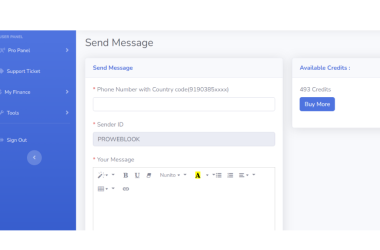Introduction
Image to Base64 Conversion: As digital communication and data transmission evolve, efficient encoding and decoding methods are increasingly vital. One such method that has gained prominence is the conversion of images to Base64 format. This transformation holds significant implications across various applications, from web development to security and optimization. In this article, we explore the intricacies of image to Base64 conversion, including its mechanisms, applications, and future developments.
Understanding Base64 Encoding.
Before delving into the specifics of image to Base64 conversion, it’s essential to grasp the fundamentals of Base64 encoding itself. Base64 is a binary-to-text encoding scheme that converts binary data into a ASCII string format. This conversion is achieved by representing binary data using a set of 64 printable ASCII characters, hence the name Base64. These characters include letters, digits, and symbols, allowing for the representation of binary data in a human-readable format.
The Base64 encoding process divides input binary data into 24-bit blocks, mapping each block to a corresponding ASCII character from the Base64 character set. Padding is added as necessary to ensure that the input data is properly aligned. The resulting Base64-encoded string is typically longer than the original binary data because it encodes every 3 bytes of binary data into 4 ASCII characters.
Image to Base64 Conversion: Mechanisms and Benefits.
Image to Base64 conversion is a specific application of Base64 encoding, where an image file is converted into a Base64-encoded string representation. This process involves reading the binary data of an image file and encoding it using the Base64 encoding scheme. The resulting Base64 string can then be embedded directly into HTML, CSS, or other text-based formats, eliminating the need for separate image files and simplifying data transmission.
One of the primary benefits of image to Base64 conversion is the elimination of external file dependencies. Embedding images directly into the source code reduces HTTP requests, enhancing webpage performance and load times. You can include Base64-encoded images inline within CSS files, streamlining styling options and eliminating the need for separate image files.
Image to Base64 conversion improves portability and compatibility. It allows secure transmission of data across systems and platforms without risk. Base64 encoding’s portability is particularly valuable for transmitting binary data via text-based protocols or embedding it within documents or messages.
Applications Across Various Domains.
The versatility of image to Base64 conversion has led to its widespread adoption across a diverse range of domains and applications. Base64-encoded images commonly enhance performance in web development by reducing external resource requests, particularly for frequently used small images.
Additionally, Base64-encoded images find applications in email communication, where embedding images directly into HTML emails can improve rendering consistency across different email clients and devices. By avoiding the use of external image attachments, Base64 encoding simplifies the email composition process and enhances the overall user experience.
Image to Base64 in mobile apps bundles assets, simplifying deployment. Ideal for graphic-intensive apps or those needing offline functionality.
Base64-encoded images in data URIs streamline integration, allowing direct inclusion within HTML, CSS, or XML documents, eliminating external references.
Security Considerations and Best Practices.
Consider security and best practices with Base64 conversion. Increased data size can impact bandwidth and server resources. Developers should carefully evaluate the trade-offs between performance optimization and data size inflation when deciding whether to use Base64-encoded images.
Another security consideration is the potential for data leakage and exposure of sensitive information. Since Base64-encoded data is easily decipherable, embedding sensitive images, such as user avatars or proprietary graphics, directly within source code or data payloads may pose a security risk. Developers should exercise caution and avoid exposing confidential or sensitive images in Base64-encoded format, opting instead for secure storage and transmission methods.
Additionally, excessive use of Base64 encoding can lead to code bloat and decreased maintainability, particularly in large-scale web projects. Developers must balance benefits of Base64 conversion with codebase overhead. Techniques like lazy loading and caching mitigate concerns, preserving advantages.
Future Trends and Developments.
As technology continues to evolve, new trends and developments in image to Base64 conversion are poised to shape the future of digital communication and data transmission. One emerging trend is the integration of Base64 encoding directly into web development frameworks and content management systems (CMS). By providing native support for image to Base64 conversion, these platforms empower developers to streamline workflows and optimize performance without the need for manual encoding.
Advancements in image compression drive Base64 efficiency. Future iterations may feature adaptive compression, enhancing performance in resource-constrained environments.
PWAs and mobile-first design increase demand for Base64 image delivery, enabling rich visuals, reduced latency, and enhanced offline functionality.
Conclusion.
Base64 conversion is a versatile tool for developers, enhancing performance and security across various domains like web and mobile.
Thoughtful consideration of security, performance, and best practices is vital for effective Base64 conversion. Its integral role in digital evolution continues to expand.
Kindly check our website Proweblook for more Web API tools. More resources can be found on our Github page, Social Channels are Twitter, Facebook & Youtube.








